Abstract
Pigeon's observational learning of successive visual discrimination was studied using within-subject comparisons of data from three experimental conditions. Two pairs of discriminative stimuli were used; each bird was exposed to two of the three experimental conditions, with different pairs of stimuli used in a given bird's two conditions. In one condition, observers were exposed to visual discriminative stimuli only. In a second condition, subjects were exposed to a randomly alternating sequence of two stimuli where the one that would subsequently be used as S+ was paired with the operation of the grain magazine. In a third experimental condition, subjects were exposed to the performance of a conspecific in the operant discrimination procedure. After exposures to conspecific performances, there was facilitation of discriminative learning, relative to that which followed exposures to stimulus and reinforcement sequences or exposures to stimulus sequences alone. Exposure to stimulus and food-delivery sequences enhanced performance relative to exposure to stimulus sequences alone. The differential effects of these three types of exposure were not attributable to order effects or to task difficulty; rather, they clearly were due to the type of exposure.
Full text
PDF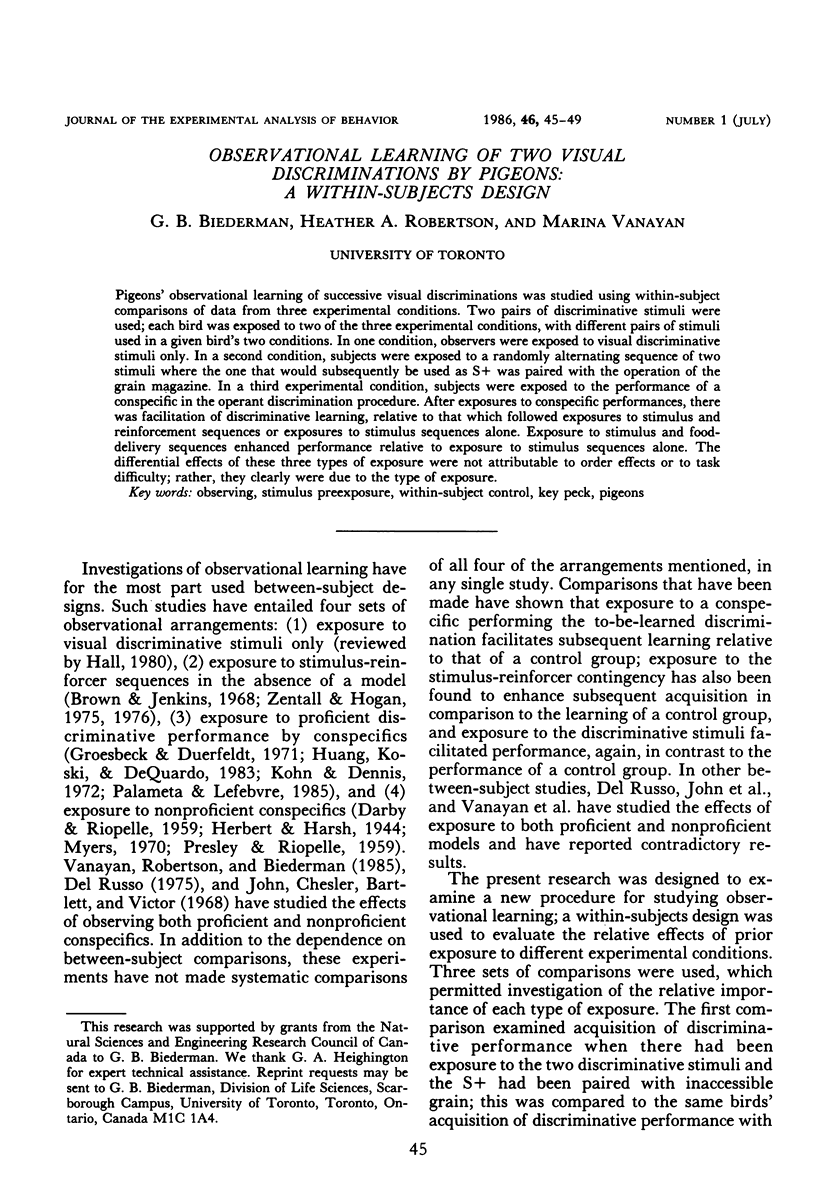
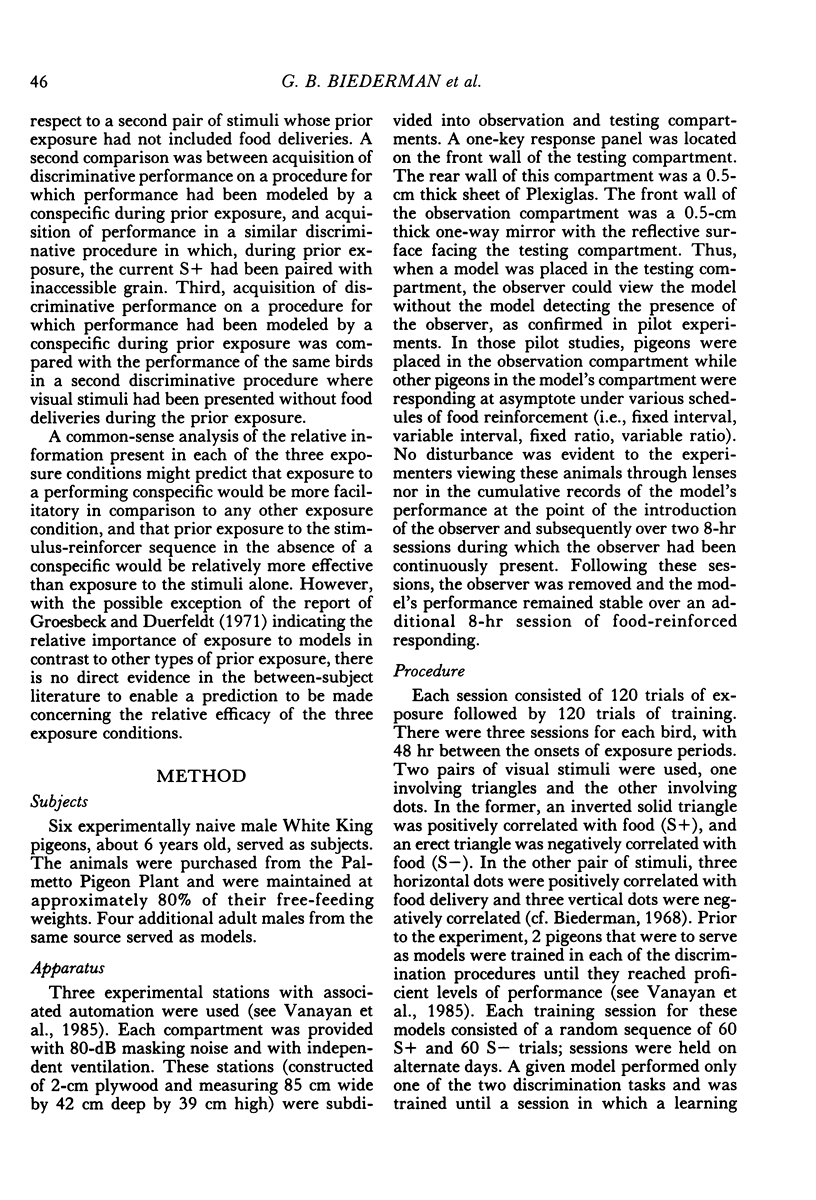
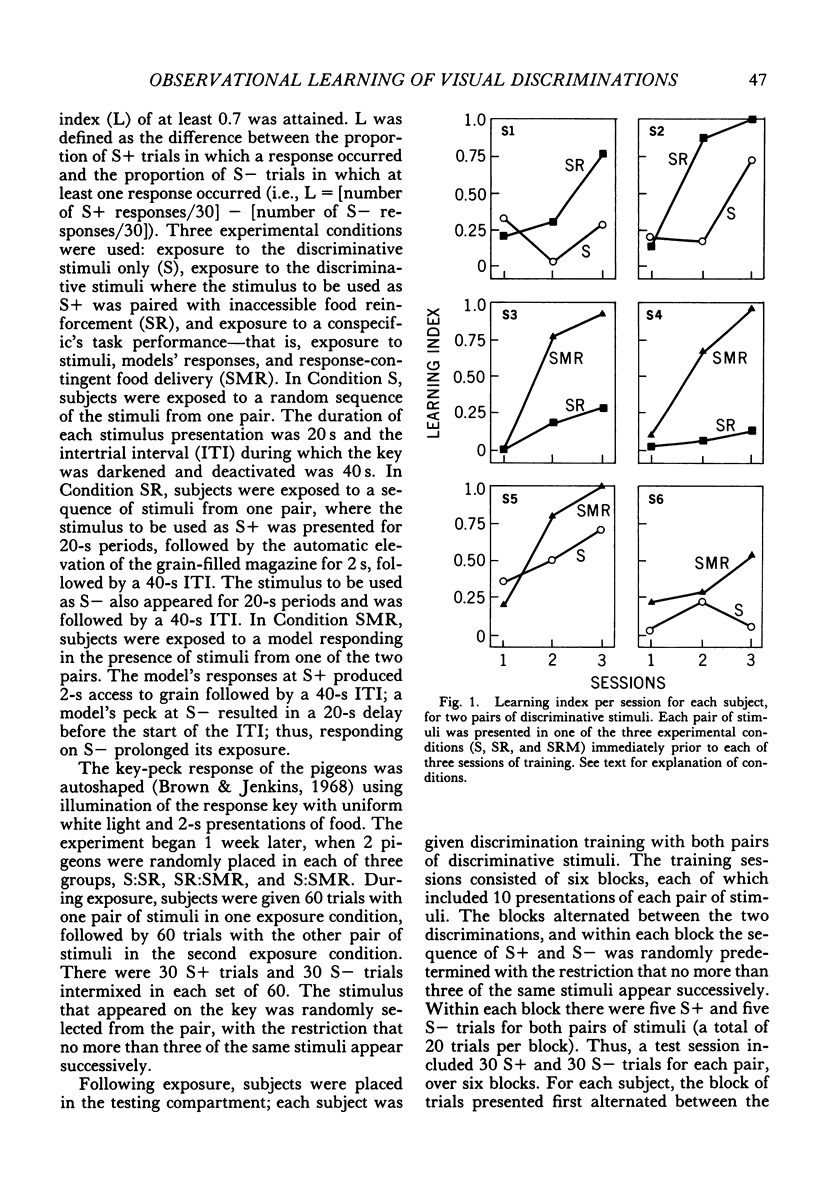
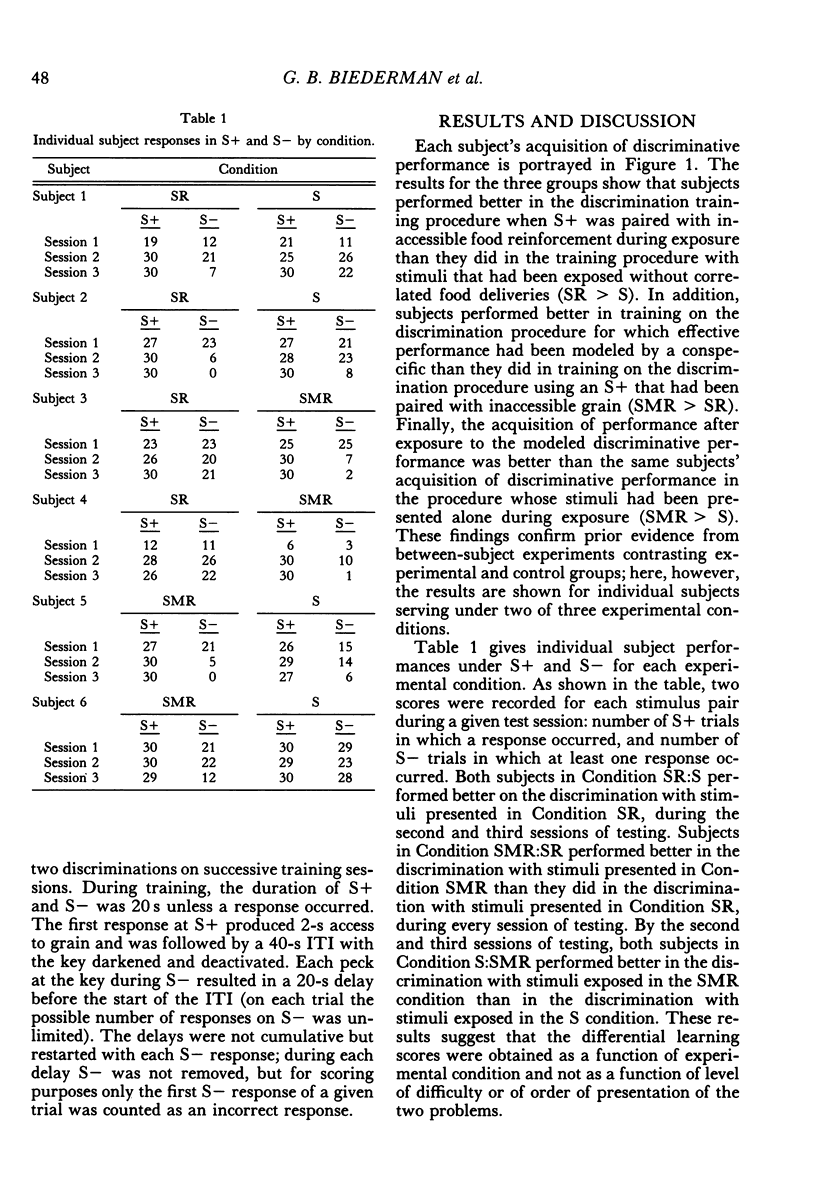
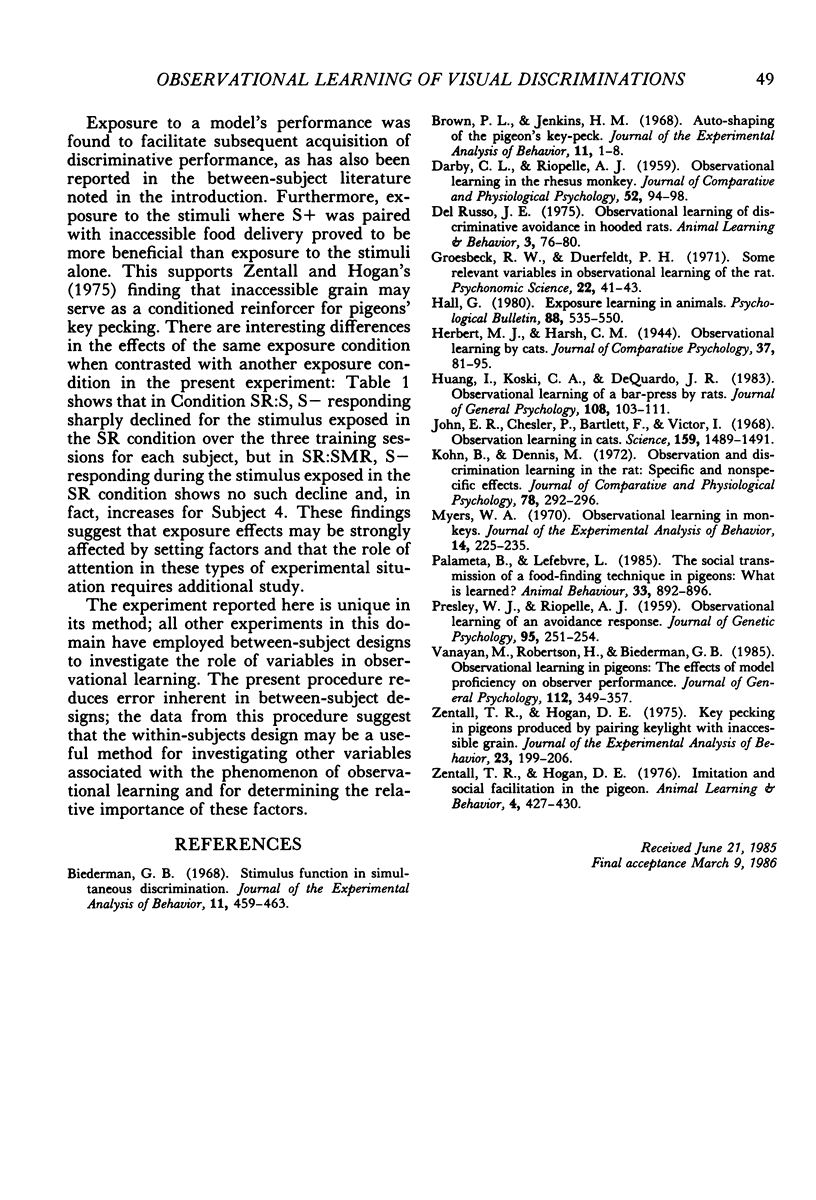
Selected References
These references are in PubMed. This may not be the complete list of references from this article.
- Biederman G. B. Stimulus function in simultaneous discrimination. J Exp Anal Behav. 1968 Jul;11(4):459–463. doi: 10.1901/jeab.1968.11-459. [DOI] [PMC free article] [PubMed] [Google Scholar]
- Brown P. L., Jenkins H. M. Auto-shaping of the pigeon's key-peck. J Exp Anal Behav. 1968 Jan;11(1):1–8. doi: 10.1901/jeab.1968.11-1. [DOI] [PMC free article] [PubMed] [Google Scholar]
- DARBY C. L., RIOPELLE A. J. Observational learning in the rheus monkey. J Comp Physiol Psychol. 1959 Feb;52(1):94–98. doi: 10.1037/h0046068. [DOI] [PubMed] [Google Scholar]
- Kohn B., Dennis M. Observation and discrimination learning in the rat: specific and nonspecific effects. J Comp Physiol Psychol. 1972 Feb;78(2):292–296. doi: 10.1037/h0032298. [DOI] [PubMed] [Google Scholar]
- Myers W. A. Observational learning in monkeys. J Exp Anal Behav. 1970 Sep;14(2):225–235. doi: 10.1901/jeab.1970.14-225. [DOI] [PMC free article] [PubMed] [Google Scholar]
- PRESLEY W. J., RIOPELLE A. J. Observational learning of an avoidance response. J Genet Psychol. 1959 Dec;95:251–254. doi: 10.1080/00221325.1959.10534265. [DOI] [PubMed] [Google Scholar]
- Zentall T. R., Hogan D. E. Key pecking in pigeons produced by pairing keylight with inaccessible grain. J Exp Anal Behav. 1975 Mar;23(2):199–206. doi: 10.1901/jeab.1975.23-199. [DOI] [PMC free article] [PubMed] [Google Scholar]


